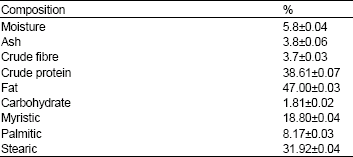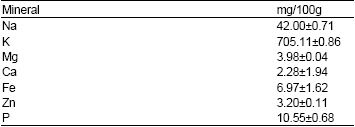Research Article
Proximate Analysis and Physico-Chemical Properties of Groundnut (Arachis hypogaea L.)
Department of Chemical Sciences, College of Natural and Applied sciences, Bells University of Technology, Ota, Ogun state, Nigeria
T.F. Akinhanmi
Department of Chemistry, University of Agriculture, Abeokuta, Ogun State, Nigeria
C.C. Ojiodu
Department of Chemical Sciences, School of Sciences, Yaba College of Technology, Yaba Lagos state, Nigeria












buhari ismaila Reply
the paper is very nice scientificaly recognise by buhari ismaila
ALIYU BUBA Reply
THIS PAPER IS VERY NICE
Alimi azees ayo Reply
this reseach is informative. Can you please send infomation on the use of groundnut in fish feed technology to this box.many thanks